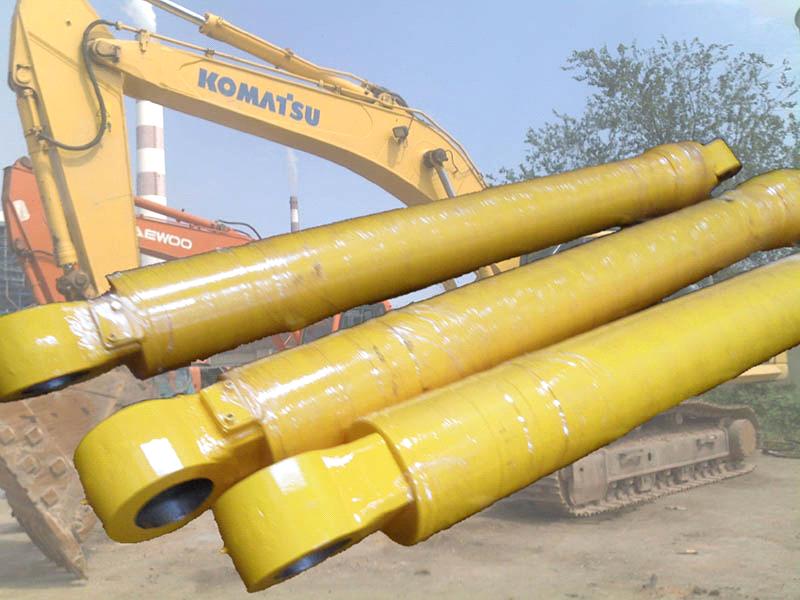Các hydraulic bucket cylinder assembly is an essential part of an excavator’s attachment system, enabling the machine to pick up, carry and dump loads. Proper maintenance and timely replacement of hydraulic cylinders and related parts is critical for optimal excavator performance and productivity.
Function Of The Bucket Cylinder Assembly
The bucket cylinder assembly consists of:
- The hydraulic cylinder itself – Which actuates the linkage system
- Pin connections – Attaching the cylinder to the boom and bucket
- Bushings, seals and bearings – Within the pins and cylinder rod
The hydraulic cylinder works by extending and retracting its rod in response to hydraulic pressure from the excavator’s pump. This motion:
- Raises and lowers the excavator bucket
- Opens and closes the bucket to grab and release material

Components Of Excavator Hydraulic Cylinders
Hydraulic cylinders used in bucket assemblies include:
- pít tông – Acts on the hydraulic fluid to extend or retract the rod
- gậy – Connects to the bucket linkage and transmits force
- Ống xi lanh – Houses the piston and rod assembly
- Con dấu – Prevent fluid leakage around the piston and rod
- Bushings – Reduce friction within the pin connections
Maintaining About Excavator Hydraulic Cylinders
Regular maintenance should include:
- Checking for leaks – Around seals, vòi, fittings and cylinders
- Inspecting rods/tubes – For dents, scratches or excessive wear
- Lubricating bushings and pins – With grease every 50 hours
- Checking hoses/fittings – For cracks, damage or loose fittings
- Testing for full range of motion – Cylinders should move freely
Signs It’s Time To Replace Cylinders:
- Rods bent or dented
- Seals leaking excessively
- Rod/piston extending unevenly
- Excess friction and binding
- Lack of full range of motion
Benefits Of Replacing Worn Cylinder Assemblies:
- Improved digging and lifting power
- Faster cycle times for faster productivity
- Smoother, more controlled bucket movement
- Reduced hydraulic system strain and wear
- Less unexpected breakdowns and downtime
